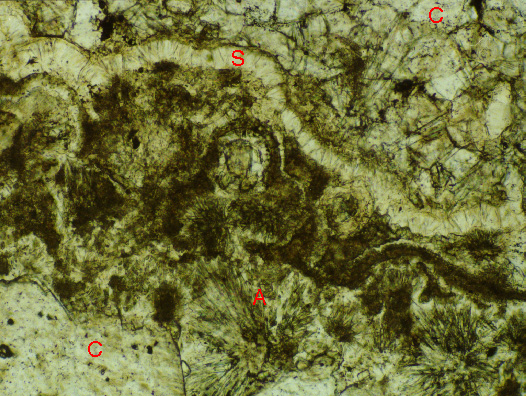| |
Figure 3-1. Chalecdony, a form of silica (S), in a thin layer over aragonite (A) and below and above calcite (C) in a stalagmite. A corresponding view in cross-polarized light shows the low birefringence of this material. This chalcedony occurs near a hiatus in a stalagmite otherwise consisting almost entirely of calcite and aragonite, suggesting that it may have formed as climate entered a drier phase. Photomicrograph was taken in plane-polarized light; field of view is 0.8 mm wide. Carlsbad Caverns, New Mexico, U.S.A; Georgia Giant stalagmite; thin section CB64. |

